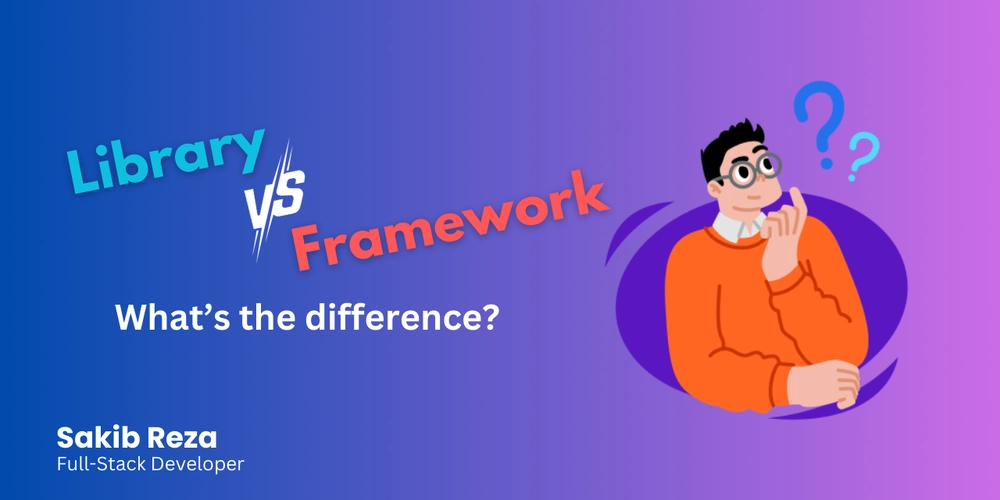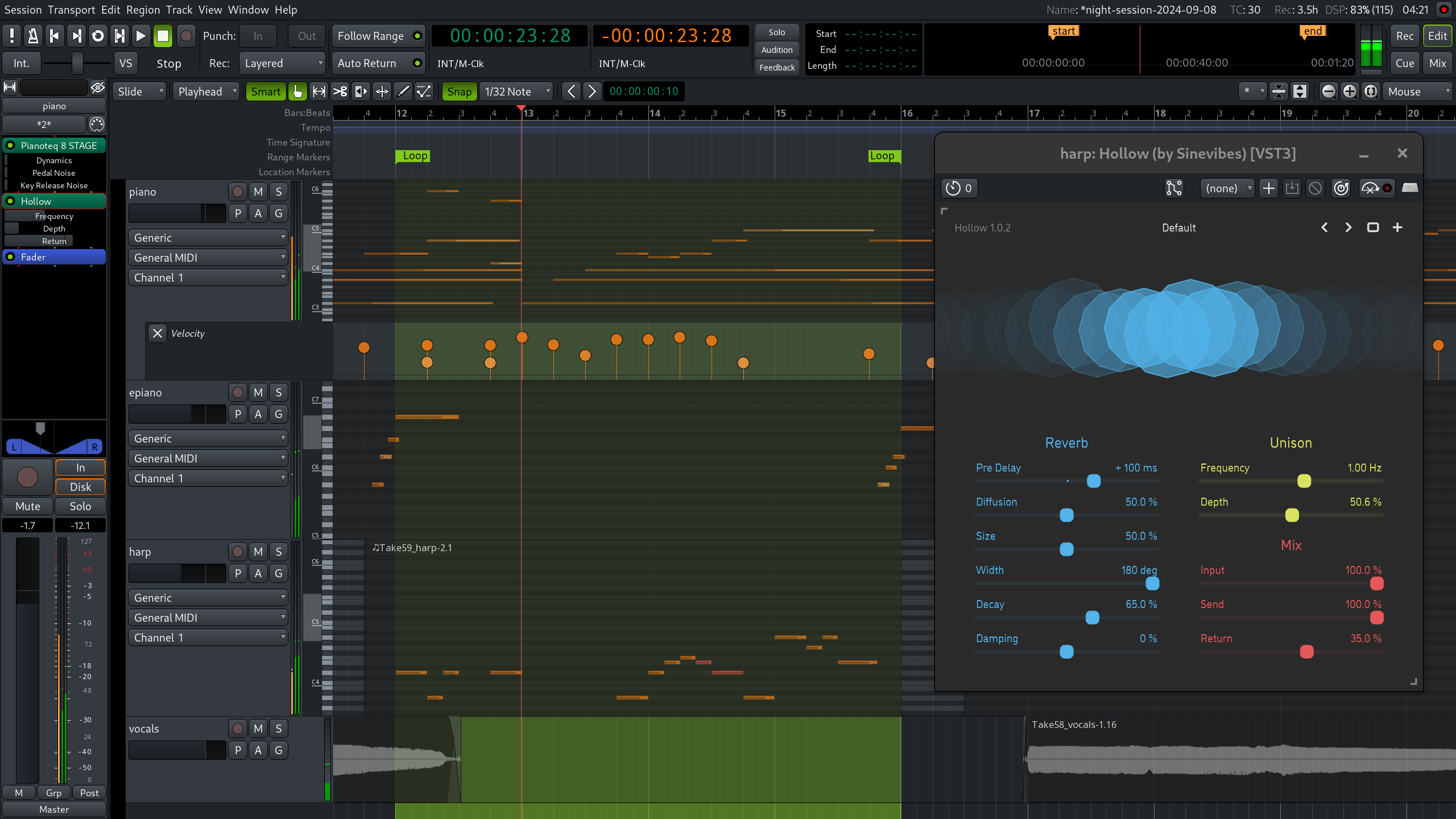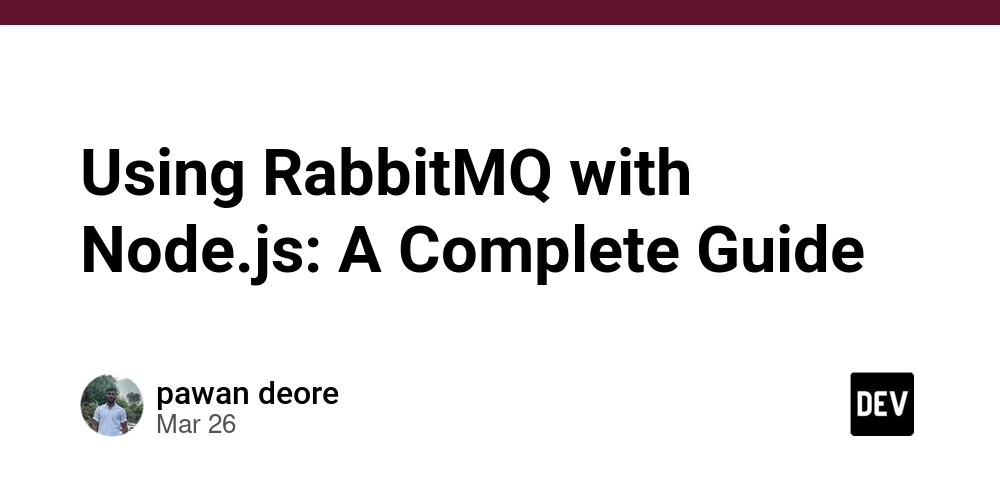Library vs Framework: Understanding the Key Differences in Programming
When learning programming, you’ll often hear the terms library and framework. Both encompass reusable code but in differing contexts. Understanding the distinction between the two helps you choose the most effective tool for your project. Step-by-step comparison 1. What is a Library? A library is a group of pre-existing functions or modules from which your code can call in order to get some task done. Important Features: You control the flow - Your app calls the library when needed. Specialized purpose - Libraries do a specific job (for instance, mathematics operations, HTTP requests). Lightweight - Use no more than what you require. Example: React (Library) → For developing UI components. You get to decide how your app should be structured. Lodash (Library) → Provides array utility methods, object utility methods, etc. 2. What is a Framework A template is a preformatted arrangement through which your application learns how it should be made. It provides a pre-set structure with pre-formulated rules. Key Features: It controls the flow – Your code is placed in the framework's structure. Complete architecture - Frameworks contain routing tools, database access, etc. Convention over configuration – You use its conventions for improved scalability. Example: Angular (Framework) → Provides a full-fledged MVC web app framework. Django (Framework) → Handles back-end logic, database, as well as templating. Key Differences Between Library and Framework Feature Library Framework Control Flow Your code calls the library Framework calls your code (Inversion of Control) Flexibility More flexible, plug-and-play Less flexible, follows strict rules Size Smaller, modular Larger, provides full infrastructure Usage Used for specific tasks Used to build entire applications Examples React, jQuery, Axios Angular, Django, Ruby on Rails Why Use a Library vs a Framework? Use a Library When: ✔ You need only specific functionalities (e.g., DOM manipulation with jQuery). ✔ You want more control over your application structure. ✔ Your project is small or requires lightweight solutions. Use a Framework When: ✔ You’re building a large-scale application (e.g., enterprise software). ✔ You need built-in tools for security, routing, and databases. ✔ You prefer standardized best practices. Conclusion Library → A toolbox with specific tools you use when needed. Framework → A blueprint that defines how your entire house (app) should be built. The choice between the two depends on your project's needs. Libraries are adaptable, while frameworks promise structure, together with efficiency.

When learning programming, you’ll often hear the terms library and framework. Both encompass reusable code but in differing contexts. Understanding the distinction between the two helps you choose the most effective tool for your project.
Step-by-step comparison
1. What is a Library?
A library is a group of pre-existing functions or modules from which your code can call in order to get some task done.
Important Features:
- You control the flow - Your app calls the library when needed.
- Specialized purpose - Libraries do a specific job (for instance, mathematics operations, HTTP requests).
- Lightweight - Use no more than what you require.
Example:
- React (Library) → For developing UI components. You get to decide how your app should be structured.
- Lodash (Library) → Provides array utility methods, object utility methods, etc.
2. What is a Framework
A template is a preformatted arrangement through which your application learns how it should be made. It provides a pre-set structure with pre-formulated rules.
Key Features:
- It controls the flow – Your code is placed in the framework's structure.
- Complete architecture - Frameworks contain routing tools, database access, etc.
- Convention over configuration – You use its conventions for improved scalability.
Example:
- Angular (Framework) → Provides a full-fledged MVC web app framework.
- Django (Framework) → Handles back-end logic, database, as well as templating.
Key Differences Between Library and Framework
| Feature | Library | Framework |
|---|---|---|
| Control Flow | Your code calls the library | Framework calls your code (Inversion of Control) |
| Flexibility | More flexible, plug-and-play | Less flexible, follows strict rules |
| Size | Smaller, modular | Larger, provides full infrastructure |
| Usage | Used for specific tasks | Used to build entire applications |
| Examples | React, jQuery, Axios | Angular, Django, Ruby on Rails |
Why Use a Library vs a Framework?
Use a Library When:
✔ You need only specific functionalities (e.g., DOM manipulation with jQuery).
✔ You want more control over your application structure.
✔ Your project is small or requires lightweight solutions.
Use a Framework When:
✔ You’re building a large-scale application (e.g., enterprise software).
✔ You need built-in tools for security, routing, and databases.
✔ You prefer standardized best practices.
Conclusion
- Library → A toolbox with specific tools you use when needed.
- Framework → A blueprint that defines how your entire house (app) should be built.
The choice between the two depends on your project's needs. Libraries are adaptable, while frameworks promise structure, together with efficiency.





































































![[DEALS] Microsoft Visio 2021 Professional: Lifetime License for Windows (92% off) & Other Deals Up To 98% Off – Offers End Soon!](https://www.javacodegeeks.com/wp-content/uploads/2012/12/jcg-logo.jpg)






